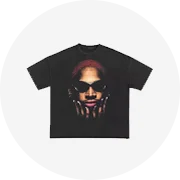Types of Electromagnetic Radiation Protective Clothing
There are several types of electromagnetic radiation protective clothing, each tailored to address specific types of radiation exposure:
EMF Shielding Clothes are engineered to protect against electromagnetic fields generated by devices such as wireless routers, mobile phones, and power lines. These garments incorporate conductive materials like silver, copper, or nickel, which block or attenuate EMF radiation. For example, fabrics with silver coatings are highly effective due to their superior conductivity. These clothes are available in various forms, including shirts, pants, hats, and blankets, making them suitable for everyday use. Proper care, such as regular washing, is essential to maintain the garment's shielding properties.
RF Shielding Garments focus on protecting against radiofrequency radiation. Like EMF shielding clothes, they use conductive metals embedded in fabrics to create a Faraday cage effect, which blocks RF signals. These garments are critical for professionals working in environments with high RF exposure, such as laboratories, hospitals, and telecommunications facilities. RF shielding clothing includes items like gloves, hats, and full-body suits, designed to be lightweight and comfortable while providing effective protection.
EMR Protective Clothing specifically targets electromagnetic radiation (EMR) exposure. It uses fabrics with conductive threads, such as silver or copper, to form a barrier against EMR penetration. This type of clothing is frequently used in industries like healthcare, telecommunications, and electronics, where workers face significant EMR exposure. Additionally, it is available for personal use to mitigate risks from common sources like Wi-Fi routers, cell phones, and microwaves.
Electromagnetic Radiation Protective Clothing also encompasses garments designed to shield against ionizing radiation, such as gamma rays, X-rays, and UV radiation. These garments often utilize lead-lined fabrics, specialized polymers, or treated leathers to provide robust protection. They are widely used in medical settings, laboratories, and industrial environments where workers may encounter both ionizing and non-ionizing radiation. Tightly woven fabrics or chemical treatments are employed to absorb or reflect UV rays, offering dual protection.





























































